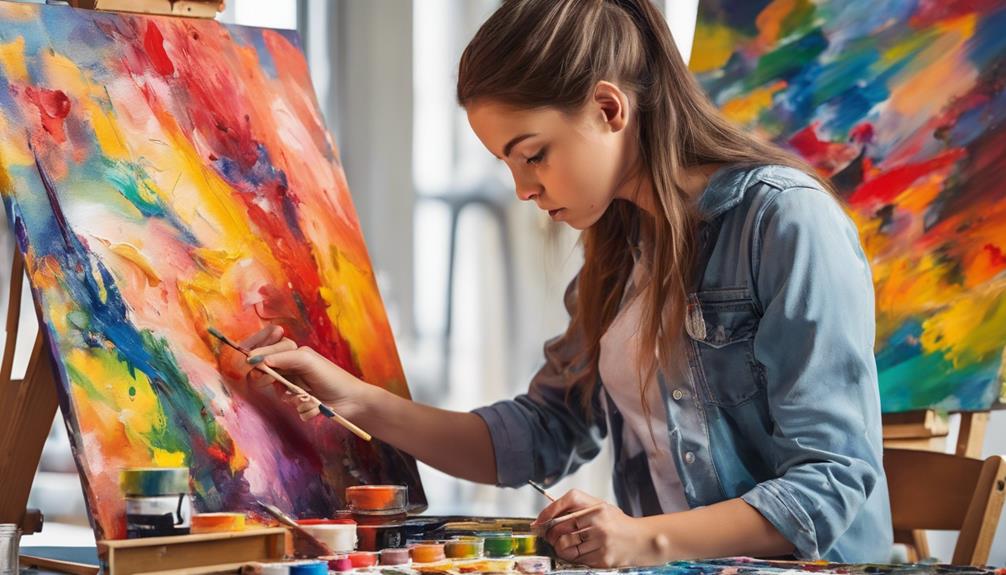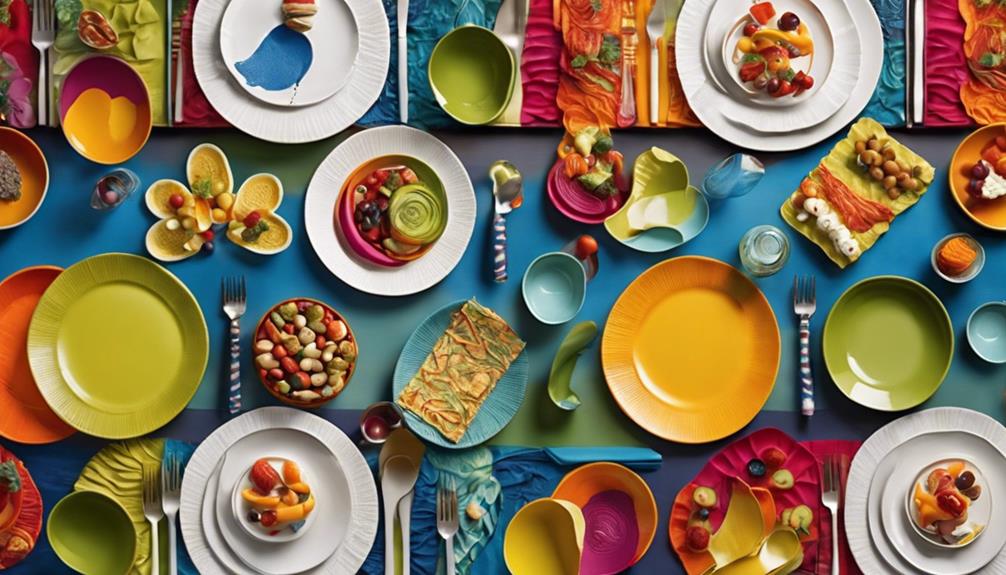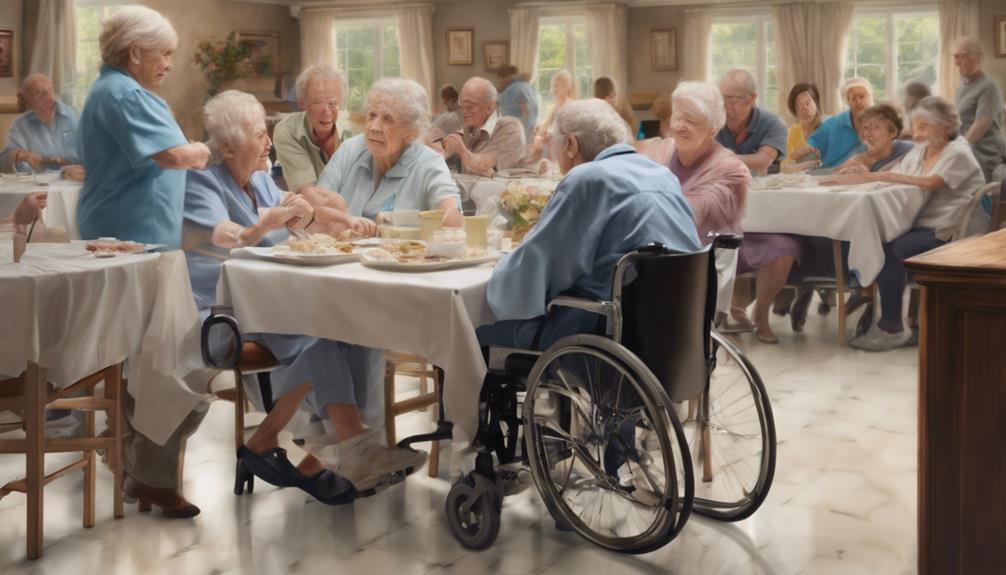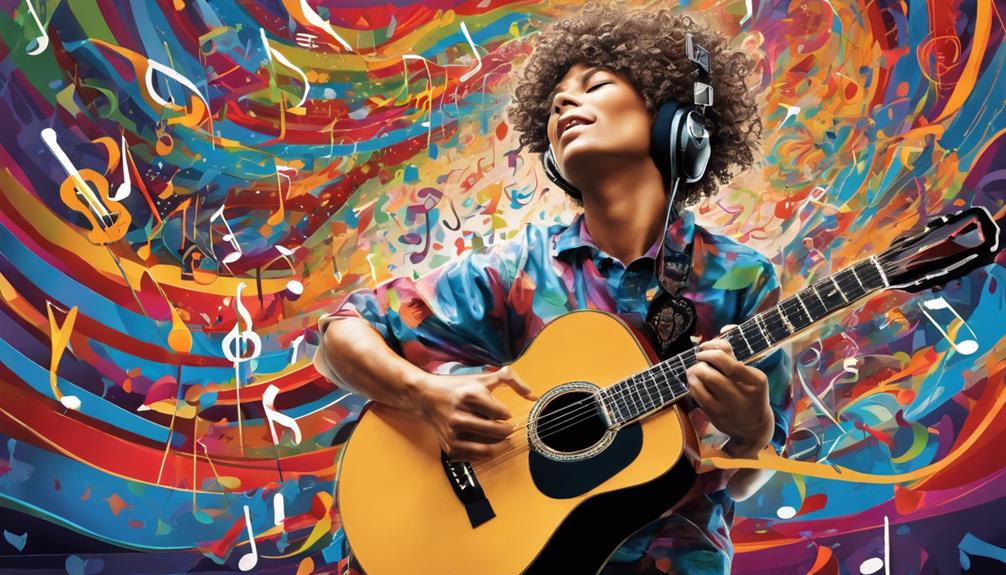Delving into the complex functions of the brain, it is intriguing to observe the significant influence artistic endeavors can have on memory retention. The correlation between creativity and memory preservation harbors untapped possibilities that we are just starting to grasp.
Exploring how art lesson plans intertwine with memory improvement opens up a realm of possibilities that could benefit individuals of all ages.
The interplay between creativity and memory might just hold the key to unlocking cognitive abilities we never knew we had.
Key Takeaways
- Drawing enhances memory through visual, kinesthetic, and semantic engagement.
- Art therapy aids in memory recall and mental well-being.
- Creative activities in education boost critical thinking and student engagement.
- Creating art stimulates brain growth, improving cognitive skills and memory function.
The Science Behind Memory and Creativity
Drawing, with its ability to significantly enhance memory retention and boost creativity, is a powerful cognitive tool that transcends traditional learning methods. When we engage in creative activities like drawing, we aren't just creating art; we're also enhancing our mental health through improved memory retention. Research has shown that art therapy, particularly through drawing, can have profound effects on memory. Drawing requires us to elaborate on concepts, translate terms into visuals, and actively engage with the material, making it a highly effective encoding strategy for memory retention.
Through art therapy, individuals can form rich memories with connections to visual, kinesthetic, and semantic aspects, all of which contribute to better retention. By tapping into multiple modalities like visual, kinesthetic, and semantic processing, drawing not only boosts memory but also fosters creativity. This unique combination of memory enhancement and creativity makes drawing a valuable tool for improving mental health and overall cognitive function.
Cognitive Benefits of Art Lessons

Engaging in art lessons not only nurtures creativity but also cultivates cognitive benefits that enhance memory retention and overall mental acuity. A study done on the effects of creating art revealed that the process stimulates the growth of new brain cells, fostering improved cognitive skills and memory function. Through the act of creating art, individuals engage multiple modalities like visual, kinesthetic, and semantic processing, which are essential for memory enhancement.
Moreover, participating in art lessons provides a therapeutic outlet for expression, aiding in the alleviation of depression and anxiety. By stimulating brain connectivity and enhancing psychological resilience, art lessons contribute to sharpening memorization skills and fostering a healthier mental state. The intricate observation and replication of details in art during lessons not only fuel creativity but also sharpen conceptual visualization, further enhancing memory retention.
Embracing art as a means of self-expression not only nurtures creativity but also bolsters cognitive abilities, creating a harmonious balance between artistic fulfillment and mental acuity.
Enhancing Memory Through Creative Activities
Immersing ourselves in the world of creative activities like drawing and painting opens a gateway to enhancing memory through unique sensory experiences and cognitive stimulation. Engaging in visual arts not only sparks our creativity but also plays a vital role in memory retention. Through art therapy and activities that involve conceptual visualization, we can improve memory recall and encoding strategies.
When we encourage individuals, especially children, to observe details in their surroundings and translate them into art, we're fostering memory development. Art serves as a powerful tool for enhancing memory by engaging different modalities of learning simultaneously, such as visual and kinesthetic processing. By participating in these activities, we form rich memories that intertwine with various sensory aspects, leading to improved memory recall.
Let's embrace the world of visual arts not just for the joy of creation but also for the profound impact it can have on our memory and cognitive abilities.
Implementing Art in Educational Plans

Incorporating art into educational plans transforms traditional learning experiences into dynamic, multidimensional journeys that ignite creativity and foster holistic understanding. When students engage in artistic activities as part of their study routine, they not only enhance their cognitive abilities but also tap into their emotional intelligence.
By integrating art therapy to help students express themselves through creative mediums, educators can deepen their understanding of complex concepts in a more profound and meaningful way. Taking advantage of visual arts in lesson plans not only cultivates critical thinking skills but also nurtures problem-solving abilities and boosts student engagement.
Through art, students develop spatial reasoning, visual literacy, and the capacity to interpret and communicate ideas effectively. This interdisciplinary approach to learning allows students to make connections between different subjects, fostering a more comprehensive understanding of the world around them.
Memory Improvement Through Creative Expression
By exploring the intersection of creativity and memory, we uncover a powerful tool for enhancing learning experiences and cognitive abilities. Engaging in creative activities, particularly through art and drawing, can significantly improve memory retention. Here are five key points to consider:
- Drawing enhances memory by requiring elaboration on the meaning of terms and involving motor action for memory encoding.
- Researchers found that drawing science concepts improved recall nearly twice as much as writing definitions.
- Memory retention through drawing involves forming rich memories with connections to visual, kinesthetic, and semantic aspects.
- Drawing taps into multiple modalities—visual, kinesthetic, and semantic—which boosts memory significantly.
- Engaging in creative activities improves memory and attention span, especially for seniors, by stimulating brain connectivity and enhancing cognitive flexibility.
Through these creative endeavors, we not only express ourselves but also strengthen our cognitive functions, leading to better memory retention and enhanced learning experiences.
Frequently Asked Questions
How Does Art Help Improve Memory?
Art helps improve memory by engaging various cognitive processes like visual, kinesthetic, and semantic processing. When we draw, our brains actively encode information, leading to significantly enhanced recall compared to other activities.
Not only does drawing require focus and attention to detail, but it also encourages us to elaborate on what we see, strengthening memory retention. Art is a fun and effective way to sharpen our memorization skills and boost our overall cognitive abilities.
What Is the Connection Between Art and Memory?
Art and memory share a profound bond, intertwining creativity with cognition. Through art, we unlock the door to a realm where memories dance and colors sing.
The strokes of a brush or the lines of a sketch become pathways for our thoughts to roam freely. In this magical realm, imagination and recollection collide, forming a tapestry of experiences that etch themselves into our minds.
Art weaves a masterpiece of memory, painting vivid stories that endure.
How Does Creative Arts Affect Cognitive Development?
Engaging in creative arts activities like drawing, painting, and sculpting enhances cognitive development by stimulating various areas of the brain. It fosters critical thinking, problem-solving skills, and imagination, which are essential for growth.
Research shows that participation in creative arts activities improves memory, attention span, and overall cognitive functioning. Creative arts encourage individuals to explore, experiment, and express themselves, leading to enhanced cognitive abilities and emotional development.
How Does Art Benefit You?
Art benefits us in countless ways. Engaging with art provides a much-needed escape from daily stressors, enhancing our mental well-being.
Creating art fosters brain connectivity, boosting resilience and reducing stress. Viewing art triggers dopamine release, elevating our mood and reducing stress levels.
Art classes enhance memory, attention span, and critical thinking skills, offering a creative outlet for mental stimulation. In essence, art enriches our lives in ways we never imagined.
Conclusion
As we wrap up our exploration of how creativity improves memory, let's remember that art isn't just about creating something beautiful, but also about enriching our minds and memories.
Like a canvas waiting to be filled with vibrant colors, our brains thrive when we engage in creative activities.
So, let's pick up that paintbrush, let our imagination run wild, and paint a brighter future for our memory and mental well-being.
Let's color our memories with creativity!









